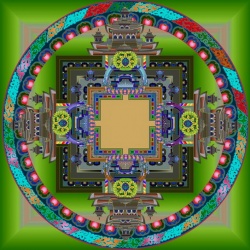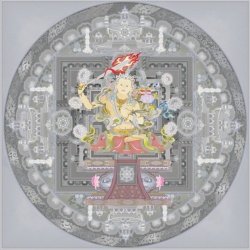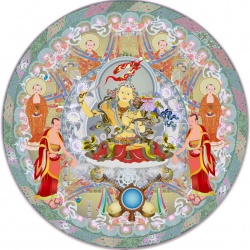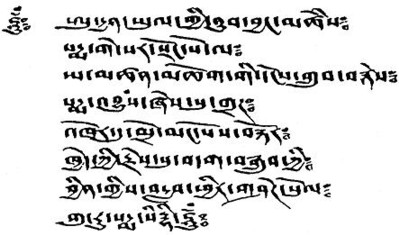Difference between revisions of "Seven Line Prayer"
Jump to navigation
Jump to search
| (One intermediate revision by one other user not shown) | |||
| Line 36: | Line 36: | ||
==Commentary== | ==Commentary== | ||
| − | [[Chökyi Drakpa]] says: | + | [[Chökyi Drakpa]] says: |
:'''HUNG''' is an expression of magnetism and a [[skilful means]] to invoke the [[wisdom]] [[minds]] of the [[jñānasattva]]s. | :'''HUNG''' is an expression of magnetism and a [[skilful means]] to invoke the [[wisdom]] [[minds]] of the [[jñānasattva]]s. | ||
| Line 64: | Line 64: | ||
{{R}} | {{R}} | ||
[http://www.rigpawiki.org/index.php?title=Seven_Line_Prayer www.rigpawiki.org] | [http://www.rigpawiki.org/index.php?title=Seven_Line_Prayer www.rigpawiki.org] | ||
| − | [[Category:Seven Line Prayer]] | + | [[Category:Seven Line Prayer]]{{BuddhismbyNumber}} |
Latest revision as of 10:30, 22 April 2014
Seven Line Prayer (Tib. ཚིག་བདུན་གསོལ་འདེབས་, Wyl. tshig bdun gsol 'debs) also known as The Seven Verses of the Vajra. The invocation by which Guru Rinpoche came into this world.
|
Commentary
Chökyi Drakpa says:
- HUNG is an expression of magnetism and a skilful means to invoke the wisdom minds of the jñānasattvas.
- The place where the Precious Master took birth was in the northwest of the land of Oddiyana. There, in the Milky Lake, where the water has the eight qualities of purity, he was born in the form of an eight-year old child in the heart of a lotus flower. The King of Oddiyana found that he was endowed with the most marvellous attainments and invited him to his palace. As he had been born from the heart of a lotus, he became renowned as the 'Lotus Born'. At the time of his birth, he was surrounded by hosts of dakinis. Following in the footsteps of this wonderful master, vow to practise until you reach his level of realization. Pray that just as he arrived at the palace of the King of Oddiyana in the past, he may come now and inspire you with his blessing.
- GURU means master. PADMA signifies that he is an emanation of Amitabha, since Amitabha belongs to the buddha family of lotus speech. SIDDHI stands for the accomplishments, and HUNG for gathering. So altogether it means, 'Gather the accomplishments of the Lotus Master!'
Sogyal Rinpoche says:
- When you invoke Padmasambhava you can do so by chanting the ‘Seven-Line Prayer’, the prayer that is most commonly used in the Nyingma and Dzogchen traditions. “To this very prayer, you can give your whole mind, in devotion,” said Guru Rinpoche. He also said:
- When a disciple calls upon me with yearning devotion,
- And with the melodious song of the Seven-Line Prayer,
- I shall come straightaway from Zangdokpalri,
- Like a mother who cannot resist the call of her child.[1]
Significance
Mipham Rinpoche wrote: "This prayer in seven vajra lines is the most majestic of all prayers to the great and glorious one of Oddiyana, the essence of all the victorious ones of the three times. Arising as the inherent vibration of naturally occuring vajra sound, it constitutes a great treasure trove of blessings and spiritual attainments." In a hidden treasure teaching revealed by Jamgön Kongtrul, Padmasambhava says:
- Billions of wisdom dakinis joined, as of one voice,
- And in order to ensure the flourishing of the secret mantra teachings,
- In this world, the realm tamed by Shakyamuni,
- They invited me, with the melody of these seven lines.[2]




